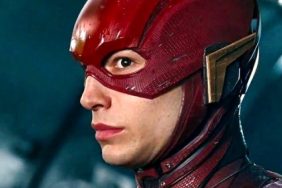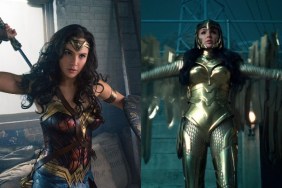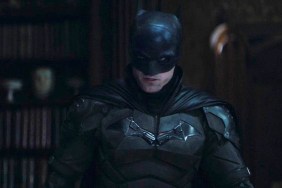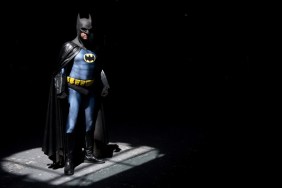There are few upcoming superhero movies as exciting as Patty Jenkins’ Wonder Woman, the most prominent female superhero to ever receive her (long overdue) solo feature film and an important new chapter in the DC Extended Universe. Some might even say that Wonder Woman is an opportunity to right some wrongs in the superhero genre, and the DCEU in particular. The trailers for the movie – colorful, grand and funny – seem to be striking new territory for the relatively dark DCEU movies we’ve been given so far.
At WonderCon this weekend I was able to steal five minutes of Patty Jenkins’ time. The filmmaker is hard at work completing Wonder Woman but took the time to introduce footage to the fans and discuss some of the issues surrounding the film with me, including the difficulties involved with telling the Wonder Woman’s origin after audiences have already been introduced to the character in Batman v Superman: Dawn of Justice, how she intends to handle the character’s pre-existing (and arguably anachronistic) theme music, and how this particular fantasy superhero film relates to the Thor sequel that she almost directed for Marvel Studios.
Wonder Woman hits theaters on June 2, 2017.
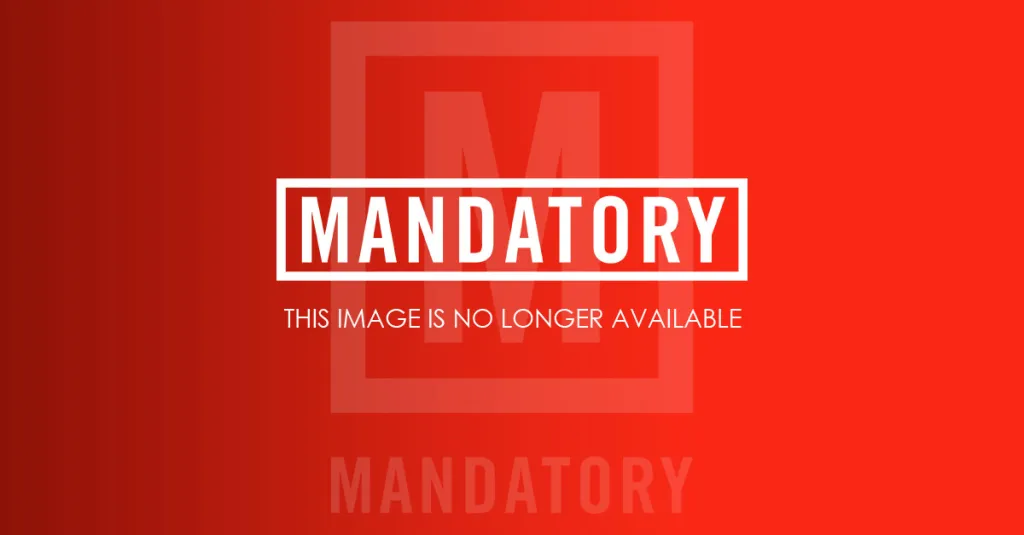
Warner Bros.
Crave: What is it like to define Wonder Woman, in an origin story, after she’s already been introduced to the world in another film?
Patty Jenkins: Well, it’s easier than that sounds because there are hundreds of years between them, and because that story is who she’s going to become a long time in the future. Whereas I get to look at, what is the story of the beautiful child and character who comes into this world? And there might even be some misconceptions about who she is, later on. We may be reading into things in Batman v Superman in the future that aren’t necessarily what you think they are. So they’re making Wonder Woman and so was I, so for me I felt very supported in making the greatest Wonder Woman film of all time, making her that beloved character.
What about some of the stylistic considerations that were made on Batman v Superman that you have now inherited? The look of the costume, that power chord [orchestral] theme that she has, which may be anachronistic?
Yeah, so the costume made perfect sense to me. I love that costume and I love that costume designer and I thought they did a great job – Michael Wilkinson is an amazing costume designer – because of its origins, because it had a relationship to the ancient Greek and Roman times. It made sense as the battle armor of somebody who would be coming from there. So that was very easy.
The song is [part of a] slightly more complicated dialogue, because that is the song of a very adult and evolved character. So instead… I love that track but we had to embrace it as a different thing. This is the story of who grows into being that person, but you can’t just come out of the gate with a song like that for a ten-year-old, you know.
This film, judging from the trailers that we’ve seen, has a very different look from the Zack Snyder films. His films tend to have a muted color palette. It’s very colorful, what we’re seeing so far from Wonder Woman. What is that so important?
It’s an origin story and it’s a classic film, and so for both of those things it’s essentially not modern in the color palettes of our times. I was going for grand, classic cinema. And also Wonder Woman is a very colorful character to me. Like, the red and the blue and the beauty, and the beauty of the world that she comes from, everything about that just asks to make a colorful film.

Warner Bros.
You came close to making a Thor movie, and both of those stories are about godlike beings who come into the world men to set us on the right path.
Yeah.
What about that is so appealing to you? Why did that happen almost twice?
Well, I think that’s an incredibly powerful story to look at. Many other superheroes find themselves in circumstances and become a superhero. In this case what’s so great is, here’s an idealistic character, and similarly with Thor, who comes to the world of man and has to observe what’s happening with them and make a decision about how to go about it.
Interestingly I had been talking to [Warner Bros.] about Wonder Woman before I ever did Thor, and that’s how those guys knew that I was interested. I was putting out there that there was the right kind of superhero film that I would love to do. So actually there was something very similar that I wanted to do with Thor, and I will always be grateful to those guys for trying because it’s not a character that you would think of hiring – it should never be this way, but – a woman, which has become such a big deal. But those guys weren’t thinking about that at all, and kudos to them for it.
So it’s interesting. There was a very similar story that I was wanting to do with Thor but they ended up realizing that they had to put him in a different kind of position within their universe, and that wasn’t the right film for me. But I’m so happy I got my shot now.
Is it important for superheroes to be aspirational? There’s been some debate about how human they need to be, and whether or not they should be godlike.
I don’t think they have to be anything. I think that they’re a metaphor that you can do all kinds of things with. But I certainly think that the grand tradition and the number one reason that they evolved was to be aspirational, and so there’s always going to be a place for that, even though I think there’s a place for all kinds of other dialogues as well.
The 15 Best Supervillains Who Haven’t Been in a Movie Yet:
Top Photo: Warner Bros.
William Bibbiani (everyone calls him ‘Bibbs’) is Crave’s film content editor and critic. You can hear him every week on The B-Movies Podcast and Canceled Too Soon, and watch him on the weekly YouTube series What the Flick. Follow his rantings on Twitter at @WilliamBibbiani.
The Best Supervillains Who Haven't Been In A Movie Yet
-
Annihilus
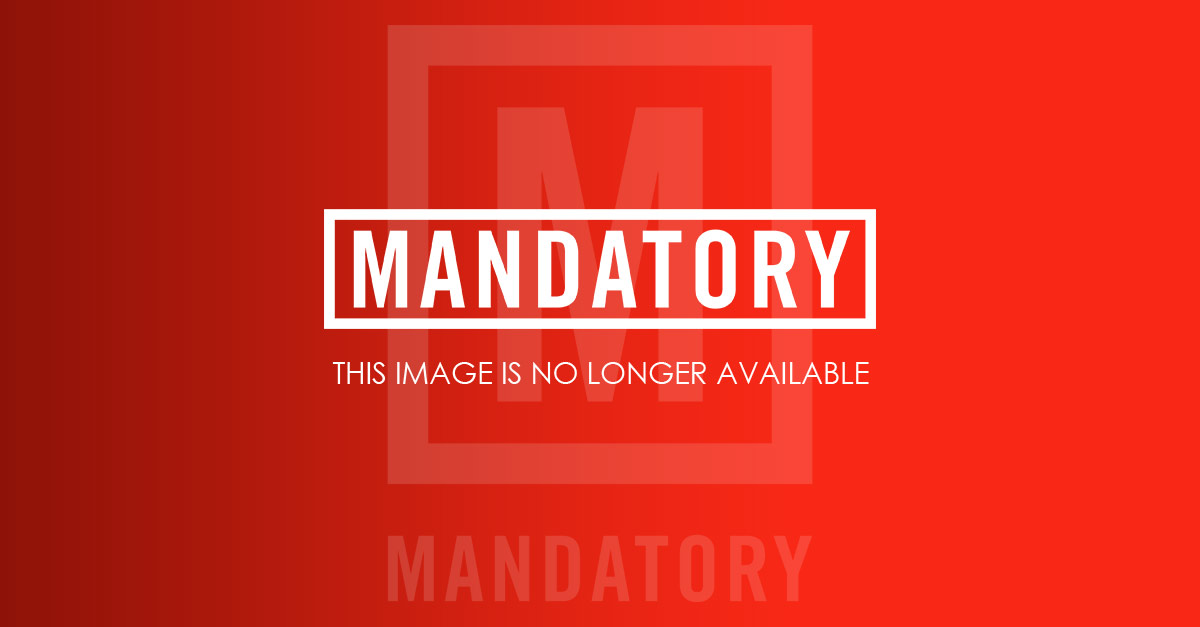
This old Fantastic Four villain reinvented himself in 2006 when he damn near conquered the universe, and inadvertently brought the all-new, all-different Guardians of the Galaxy (a.k.a. the version everyone currently knows and loves) together in the first place. He's big, he's powerful, he looks scary as hell, he totally deserves a badass name like "Annihilus."
Photo: Marvel
-
Anti Monitor

The all-powerful Anti-Monitor (whose name only makes sense with a LOT of context) destroyed an almost infinite number of universes, forcing the entire DC comic book line to reboot itself in the 1980s. Bad guys don't get much badder than this.
Photo: DC
-
Bizarro

In some stories Bizarro is a failed clone of Superman, in others he's from a "bizarro" planet in which everything is the opposite of Earth. Either way, he's just as powerful as the Man of Steel and dangerously deranged, making him one of Superman's most popular villains for many years.
Photo: DC
-
Brainiac

Another one of Superman's most popular bad guys, Brainiac is an alien android (in some versions, just an alien) obsessed with collecting intelligence from the around the universe. Some storylines claim he is directly responsible for the destruction of Krypton, others depict him as a destructive force that eliminates whole planets after he's learned everything about them.
Photo: DC
-
Cassandra Nova

Cassandra Nova is Charles Xavier's twin sister (sort of), who escaped from the womb and became the mirror image of everything he stood for. Professor X tried to bring about a new age of peace between mankind and mutants. Cassandra Nova was responsible for a genocide that left 16 million mutants dead.
Photo: Marvel
-
Clayface

There aren't many popular Batman villains who haven't shown up in theaters yet, but Clayface is easily the most prominent. An actor who fell victim to a toxic substance that melted him into clay, but gave him the ability to shapeshift into different people and deadly objects, Clayface is one of Caped Crusader's most powerful foes.
Photo: DC
-
Kang the Conqueror

Kang the Conqueror is a little bit complicated, but time travel will do that to you. Basically he's a descendant of Reed Richards from the future, who became a time-hopping despot, who also became a more wizened villain named Immortus later in life, but thanks to time travel they sometimes work together. He's an ambitious villain, but the possibilities are inherently endless.
Photo: Marvel
-
Kraven the Hunter

A lot of Spider-Man villains have animal powers (so does Spider-Man, obviously), so a big game hunter was always a natural fit. Kraven the Hunter may seem like a gimmick villain but his obsessive need to prove his superiority to Spider-Man eventually led to one of the hero's best and darkest storylines, Kraven's Last Hunt.
Photo: Marvel
-
Metallo

Warner Bros.' obsession with Lex Luthor and General Zod has left a lot of Superman's best villains on the cutting room floor. Here's another one: Metallo, a criminal trapped inside a powerful metal body, whose ability to rebuild himself - and his kryptonite battery core - has made him one of the Man of Steel's most formidable foes.
Photo: DC
-
M.O.D.O.K.

He's a big head with little arms and legs, and he's "Designed Only for Killing." This is M.O.D.O.K., one of Captain America's strangest and most unforgettable villains, who uses his mental powers to lead an army of evil super scientists.
Photo: Marvel
-
Mr. Mxyzptlk

This hard-to-pronounce villain (here goes: 'Mix-YEZ-pit-lick") is an all-powerful prankster deity from Dimension X, who routinely pops into Superman's life to stir up mischief. But Mr. Mxyzptlk is more than a joke character, he's been the cause of major strife in the DC universe on multiple occasions and, in a classic story by Alan Moore, revealed himself to be one of Superman's most dangerous adversaries.
Photo: DC
-
The Phalanx

One of the most fearsome alien races in all of comics, the Technarh are "techno-organic," alive but made of machinery, with the ability to transform themselves and infect other races. They formed The Phalanx and helped conquer the universe with Ultron as their leader, and proved themselves one of the most visually interesting and formidable threats in the Marvel universe.
Photo: Marvel
-
Sinestro

Sinestro technically appeared in the live-action Green Lantern movie, but only as a hero, not as a villain. Once the most celebrated hero of the Green Lantern Corps, he eventually was revealed to be a corrupt influence, and went on to form his own army of Yellow Lanterns, who used their powers to instill fear across the galaxy.
Photo: DC
-
The Skrulls

Another mighty alien race, The Skrulls are a species of shapeshifters who have repeatedly infiltrated the ranks of Marvel's heroes in an attempt to conquer our planet. In the epic crossover event Secret Invasion, they came shockingly close.
Photo: Marvel
-
Thunderbolts

Nowadays the Thunderbolts are a group of supervillains employed by the government, not unlike the Suicide Squad. But when they first premiered they had one of the cleverest ideas in comic book history: they impersonated a new team of superheroes, and defeated their fair share of other supervillains, to earn the world's trust. Then, when the time was right, they revealed their secret identities and took over the planet! Lots of these villains deserve to be the bad guy in a superhero movie, but that's such a clever idea that the Thunderbolts probably deserve their own film.
Photo: Marvel





